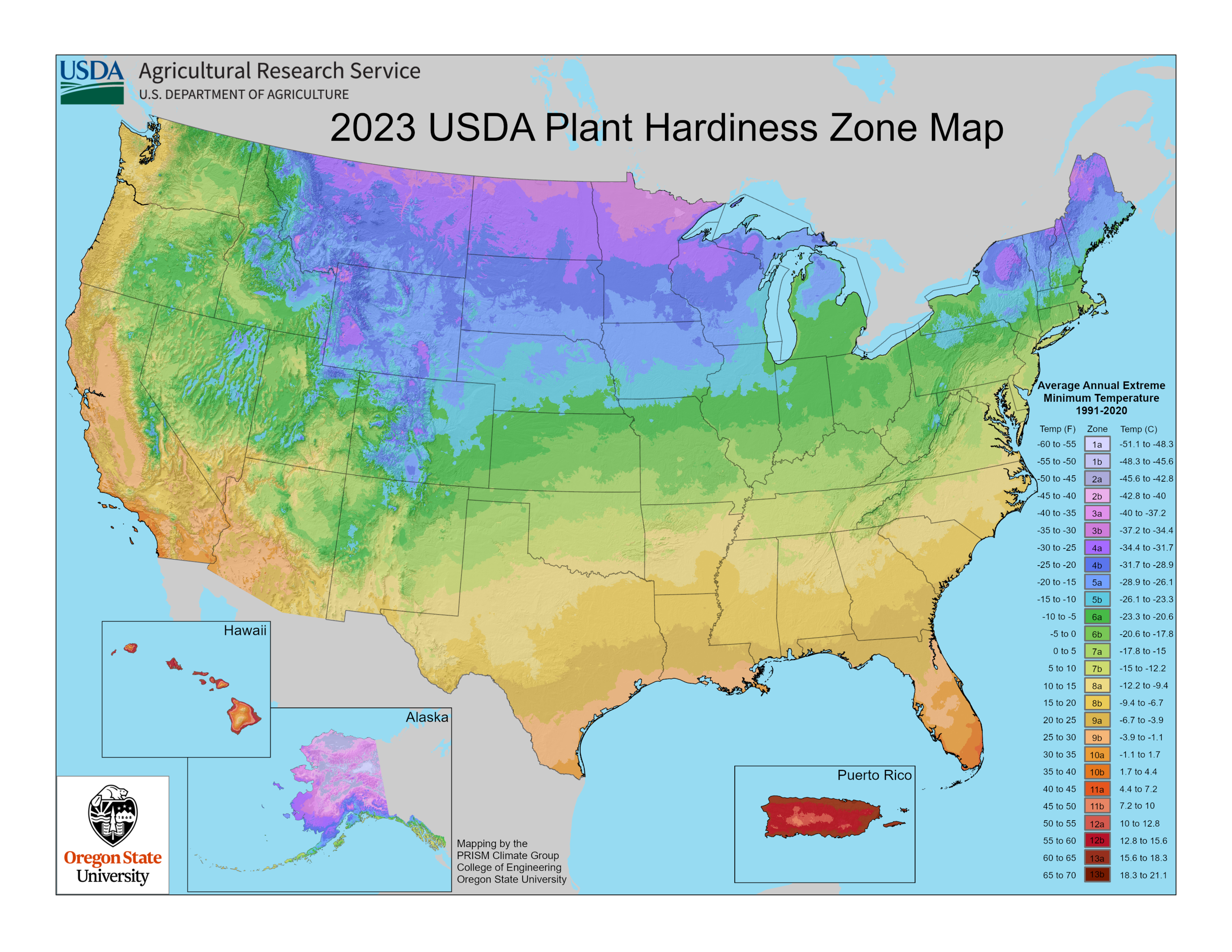Rooting into Plant Hardiness Zone Maps for Blooming Good Gardens
- By Chris Vagasky
- Apr 11, 2024
Chris Vagasky
There have been tornadoes in Wisconsin, a major winter storm on the Colorado Front Range, and baseball Spring Training has come and gone. Spring has sprung and it’s even ahead of schedule according to the USA National Phenology Network. This is due in large part to the record warmest winter for the contiguous United States.

Data from NOAA showing the contiguous United States experienced its record warmest December – January – February period on record, with an average temperature more than 5°F above normal.
Gardeners are well aware of the effects of weather on their plants. The timing and amount of rain, snow, heat, cold, sun, or clouds can impact the performance of their plantings. Climate plays an important role, as well, with some perennial flowers, trees, and shrubs better able to handle colder winter extremes than others. To help gardeners know what plants should be able to survive the winters in their region, the United States Department of Agriculture (USDA) publishes maps of Plant Hardiness Zones, and these maps were recently updated for the first time since 2012.
A Brief History of Plant Hardiness Zone Maps
Plant Hardiness Zone Maps (PHZM) were initially developed in the 1920s, first in 1927 based on the average temperature of the coldest month, then in 1928 based on the average annual lowest temperature, for each location. The 1928 map was produced for the USDA and had 10°F intervals, without zone designations. Between the 1930s and 1960s, a similar map was produced, but did not use consistent temperature intervals between zones, which prompted the USDA to create its own maps with consistent zone designations – becoming the standard for PHZM.
A comprehensive update to the USDA PHZM was released in 1990, using data from National Weather Service Cooperative Observer weather stations, and in 2012, an updated version expanding the number of zones, using a more recent averaging period, new weather stations, and improved interpolation and mapping was released. Expanded details of the history of PHZMs are available in the AMS Journal of Applied Meteorology and Climatology.
The Newest Plant Hardiness Zone Map
The newest USDA PHZM was released on November 15, 2023. Many gardeners will find themselves in a new Hardiness Zone. The full map is shown below, but you can check the details for your Zip Code on the USDA Plant Hardiness Website.

The new 2023 USDA Plant Hardiness Zone Map for the United States. Individual state maps can be found on the USDA Plant Hardiness Website.
Most of the United States has moved up at least one-half of a zone (5a to 5b, for example). This can be seen in the map below. Some of these changes are related to improved modeling and data availability (especially in more complex terrain), but our warming climate is driving a lot of these changes. In Wisconsin, for example, Zone 3b (-30°F to -35°F) is almost completely removed from the state, while Zone 6a (-5°F to -10°F) has been introduced along the Lake Michigan shoreline from Kenosha to Sheboygan.

How to Use These Maps
Plant Hardiness Zones are most important for perennial plants – those that come back year after year. As the coldest winter temperatures get less extreme, less hardy plants may survive better in colder regions. Annual plants – those that germinate, flower, and die in a single growing season – can generally be grown in any zone, as long as they are planted after the last hard frost in your region.
When you’re picking plants for your garden, check the tags to see what hardiness zone the plants can grow across. Even if you’re in a warmer zone, it doesn’t hurt to find perennials that can survive in colder zones. The hardiness zones are based on the average minimum temperature, so an extreme cold snap in the winter could kill a plant that hasn’t evolved to survive it.
One of the best ways to ensure you have perennials that can survive the weather in your region is to purchase native plant species. These plants have grown in your region’s climate for centuries or longer and are adapted to the weather conditions that are most common. They require less water and maintenance and support local wildlife!
If you have any questions about how to find the best plants for your area, reach out to your local university’s extension program. They have specialists whose job is to support local gardeners and growers and can help you grow your best garden.
